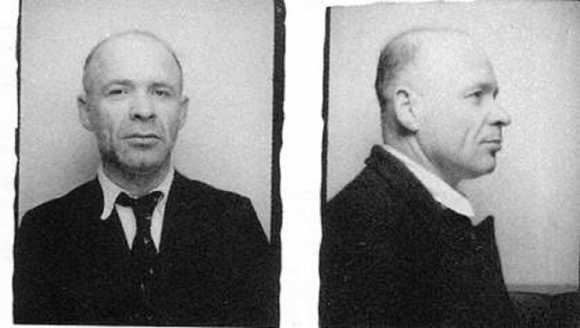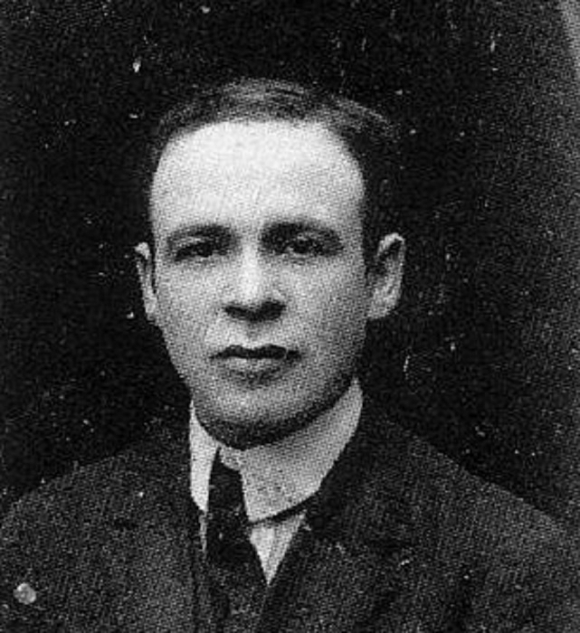Since the kahila (Israelite Community of Uruguay) founded the La Paz Jewish Cemeterylittle more than a century ago, never has a tomb been as visited as that of Ms Shoshani (1895-1968). The philosophical dimension of this enigmatic character (of whom neither his real name nor the place where he was born is known) is enormous. Every year hundreds of people come to place small stones on the tombstone of the master kabbalist and talmudist (expert in the Cabalaa current of mystical and allegorical interpretation of the Old Testament and in the Talmudholy book of Judaism).
Shoshani spoke seven languages. He was also a mathematician and practiced esotericism. He was the teacher of the writer and Nobel Peace Prize elie wiesel and the Lithuanian philosopher Emmanuel Levinas. Those who knew him have said that he looked like a homeless man. However, there are those who claim that he was a rich man, and that he used his money to help poor people and yeshiva students (Torah and Talmud study center).
The Nobel Prize winner recalled in his book Legends of our time the first meeting he had with Shoshani, describing him as “unkempt, ill-groomed and ugly”, similar to “a tramp”.
Wiesel, who was a victim of the Holocaust or Shoah, met him in the postwar period, in 1947, on a train that crossed the French countryside.
Shoshani (or Chouchani) tried to ensure that nothing of his lasted over time (he did not speak of teaching but of motivating and setting directions), among other things, avoiding leaving publications, although a few years ago some of his notebooks with intricate notes were found (they are in the National Library of Israel and can be accessed through the Internet).
Evidently he did not achieve his purpose, because his legacy continues to mobilize and does not seem to have an expiration date.
On his tombstone in the extensive Canarian cemetery (where high niches cannot be built because the bodies must rest on the ground), the following epitaph written by the Nobel Peace Prize winner himself, who also paid for the tomb, can be read: “Rabbi and sage Shoshani of blessed memory, his birth and life are sealed in enigma.” Beyond this dedication, Shoshani was not a rabbi, although he is recognized as such by many.
Clinical psychologist, psychoanalyst and teacher George Schneidermann is one of the people who knows the most about the life and work of Shoshani. “He was an individual who was subjected to a withdrawal from worldly pleasures, who was easy to be mistaken for a pauper and who mingled in all areas of society, who had no problem getting into any street to chat with the people. He was also a subject extremely removed from the rigors of Jewish orthodoxy, which complied with the Mosaic requirement but was obviously very imbued with Socratic philosophy, ”Schneidermann explains to Revista Domingo.
And he adds: “He was someone who studied the different expressions of universal culture but who had focused a lot on maieutics. He had students here and also in Buenos Aires. He gave seminars and did not allow them to take notes. He said that he simply encouraged the inner search and that in this way each one would be able to find the path of their own truth”.

A brilliant mind
as you have written Martin Kalenberg on the jewish portal YourMeserShoshani’s students said he had a photographic memory. He remembered passages from the Talmud and the Hebrew Bible verbatim. And he not only knew them, but he could also interpret them with a masterly gift, citing the classical exegetes and introducing innovations of his own.
“The Nobel Peace Prize winner compared him to Kafka and the Hasidic master Rabbi Nachman of Breslav, who wanted their works burned after they died. Shoshani also made sure that none of it lasts over time,” says Kalenberg. And he adds about another famous disciple: “Levinasthe main Jewish philosopher of the 20th century, expressed that Shoshani was his inspiration and guide for the study of the Talmud and for the concretion of his academic works linked to Talmudic readings”.
On the intellectual capacities of the man who occupies the most enigmatic tomb in the Jewish cemetery, Schneidermann adds: “He was also an expert in the Koran, he knew it by heart. There are certain theories that he may have suffered from one of those pathologies that imply having a prodigious memory capacity. He had a cosmic memory, to put it mildly.”
According to the psychologist and teacher, Shoshani handled himself both within the esoteric and exoteric plane. “Although he was reluctant to incorporate worldly habits, he was an individual who knew inside out the idiosyncrasies of each country where he lived. He spoke perfectly Yiddish, Hebrew, Aramaic, Arabic, English, German and Spanish”.
The Wikipedia entry in French on this mysterious character is titled Monsieur Chouchani (“Mr. Shoshani”), a name from another era -as Kalenberg says- in which to demonstrate erudition it was not necessary to become a graduate, master or doctor.

Coming to die in Uruguay
In 2017, the figure of Shoshani was addressed by the journalist Marcelo Gallardo in a note for El País, about the life story of a French antique dealer named Georges Jancou, who decided to come to Uruguay to die to be buried next to his teacher.
When Jancou and his wife Jenny Tapinka visited a bookstore in the Montmarte district of Paris in 1998, the antiquarian was deeply moved when he came across the book Monsieur Shoshani. The Enigma of a 20th Century Master, by the French writer Salomón Malka. The cover displayed three photos of the protagonist, all from the same period. And Jancou knew that face.
“My husband was petrified when he saw the book,” Jenny Tapinka told El País at her residence in Maldonado. The book carried a foreword by Elie Wiesel.
From that day on, the antique dealer’s life changed forever. Like Malkas, like the Nobel Prize winner, Georges Jancou was also attracted by the enigmatic personality of Mr. Shoshani, who had lived on the second floor of a small building in Montevideo located at 1093 Maldonado Street.
Fifty years earlier, in 1947, Jancou had had a brief but significant relationship with the book’s protagonist. The antiquarian was 13 years old when he received from Shoshani the teaching that every Jew must have before celebrating the Bar Mitzvah, the ceremony of religious maturity. Jancou assured that after that meeting he never saw his teacher again.
Over the years he looked for it everywhere. She only heard rumors of him; some located it in Israel, others in the United States. Until the book gave him the clue to find it: Shoshani had died on January 26, 1968 and was buried in a place unknown to Jancou. It was a strange city in a distant country: his remains rested in the Israelite cemetery of La Paz, in the department of Canelones, Uruguay.
Why do people go to his grave? This is how Schneidermann interprets it: “There are many people who value the figure of Shoshani because they understood that he was a great energy pole. Not from a paranormal perspective, but because he was a person who radiated wisdom and who became a reference for the transmission of the ancestral legacy. It is not so much that people are going to ask for miracles, but rather that it is understood that recollection and an ascent towards the highest levels of spirituality can be found there”.
a movie life
For several years, French-Israeli filmmaker Michael Grynszpan has been preparing a documentary about Shoshani, which includes a visit he made to Montevideo on the occasion of the 50th anniversary of his death, which occurred in Durazno on January 26, four years ago. 1968. At that time, in the Jewish cemetery, under persistent rain, a tribute ceremony. Grynszpan carried out a detailed search that allowed him to interview relatives and former students of the teacher in Israel, France and the United States.
Diego Moraes, author of the book Maestros del esoterismo del Río de la Plata, told El País in 2018 that Shoshani was one of the most important representatives of esotericism in this area of the continent.
To which mysterious character belongs the most visited tomb in the Jewish cemetery?
